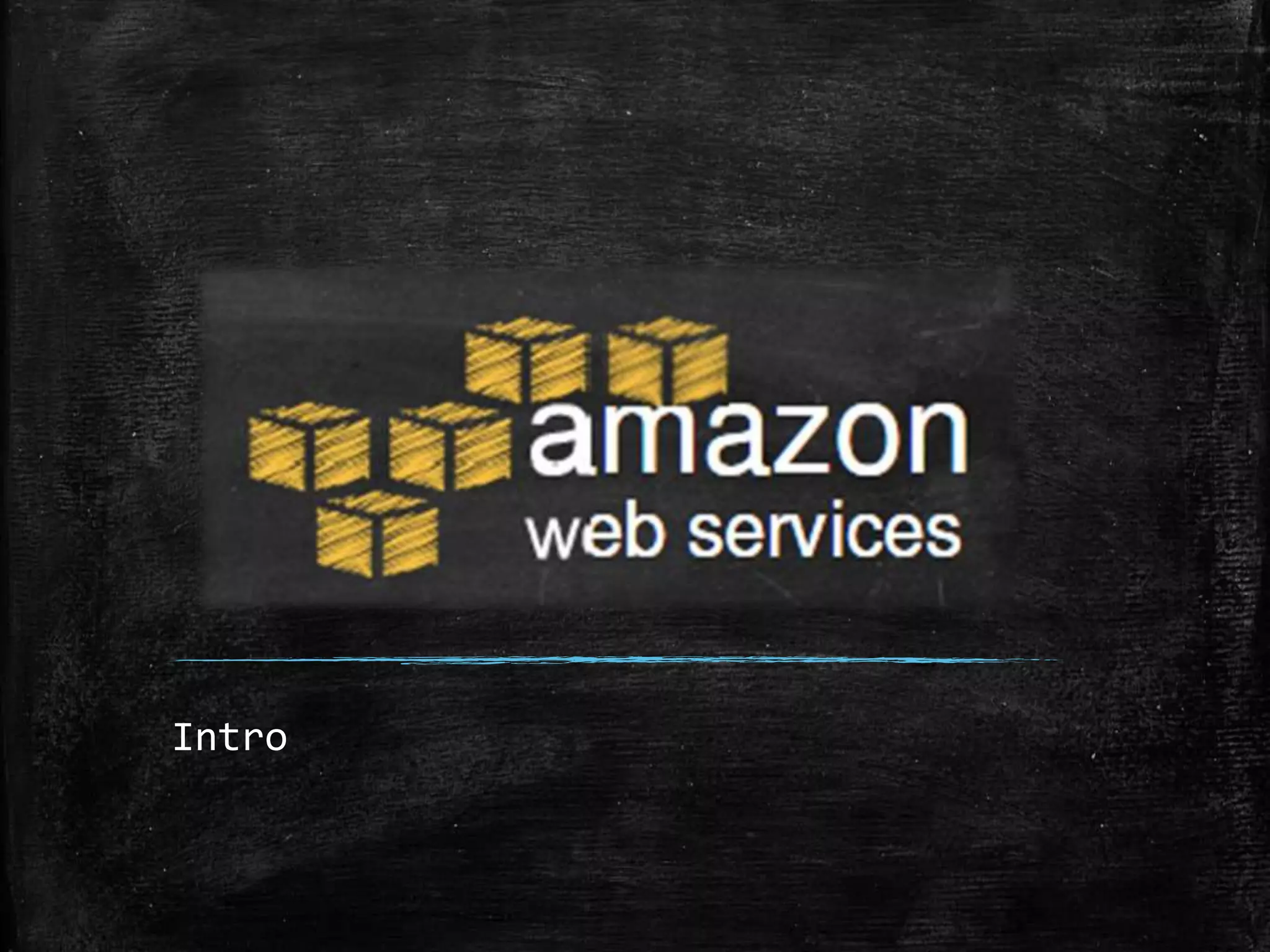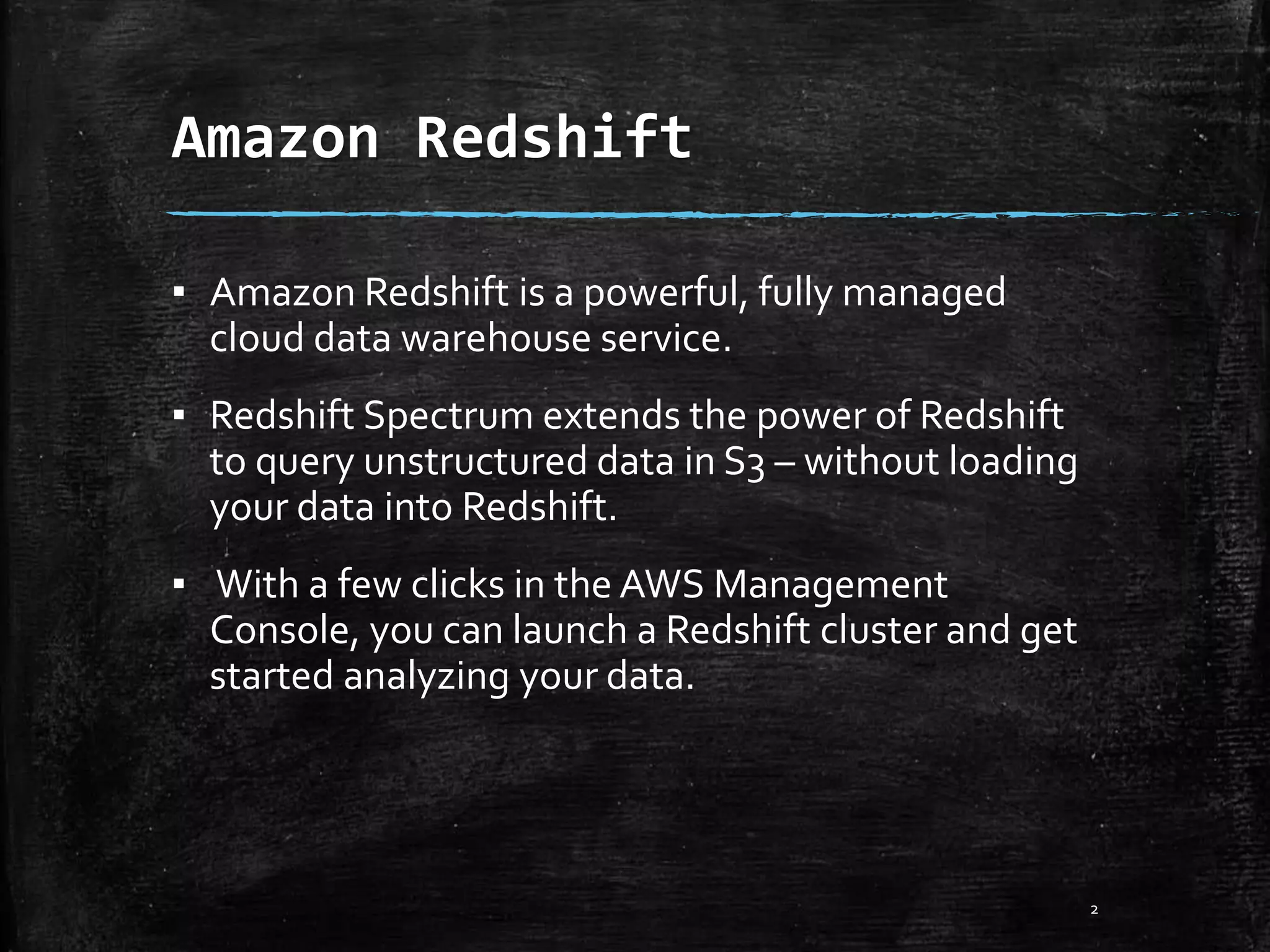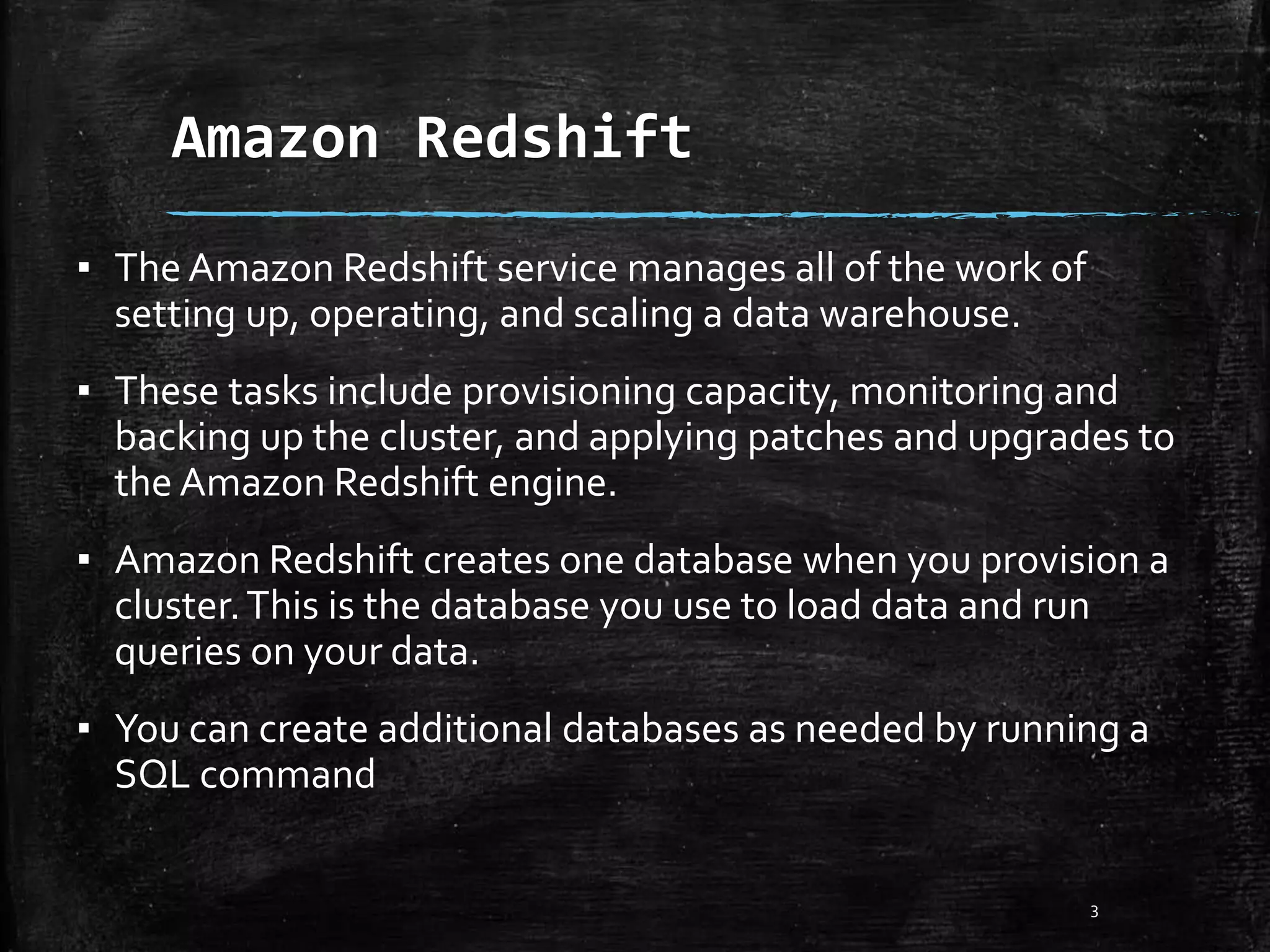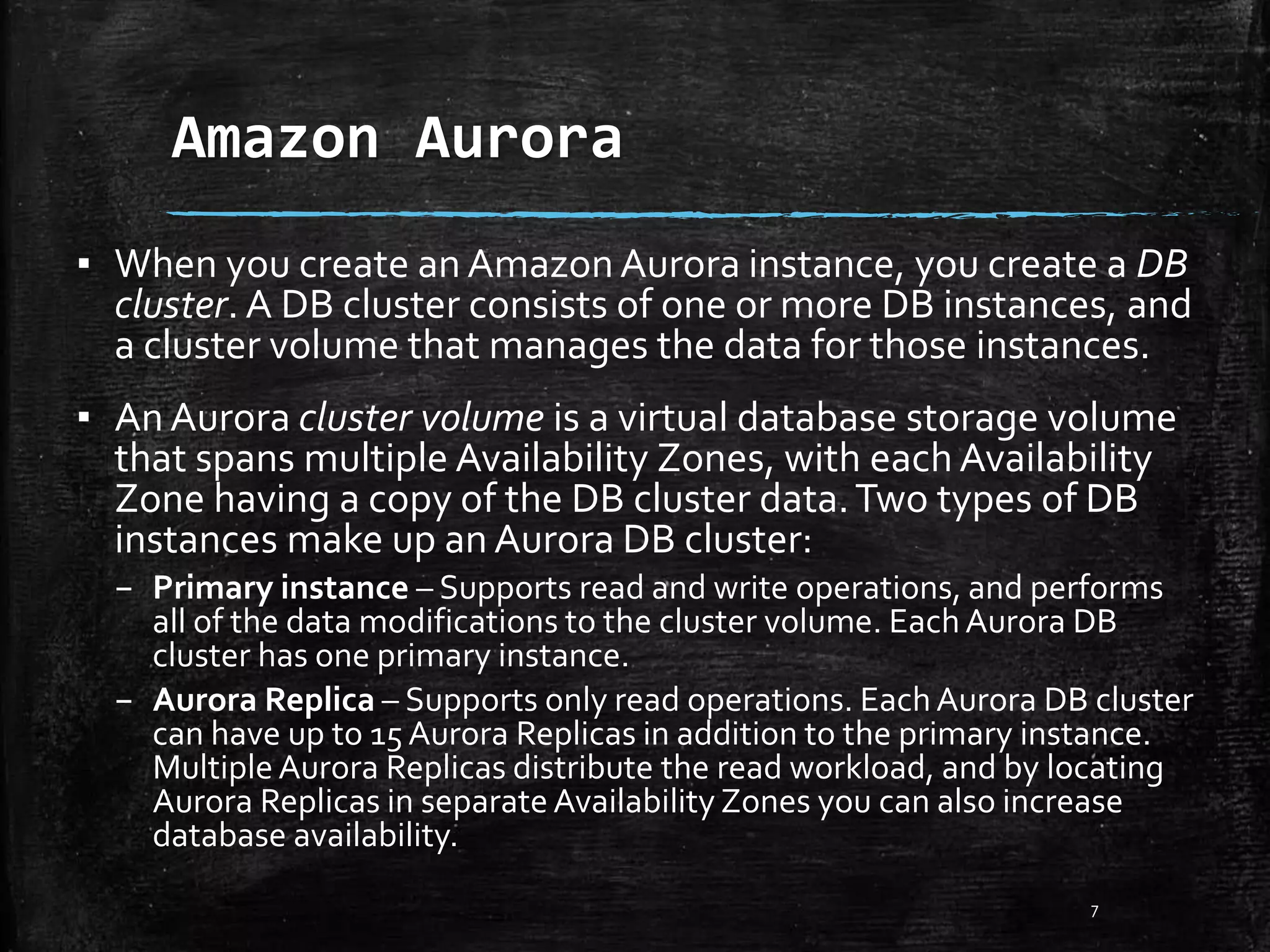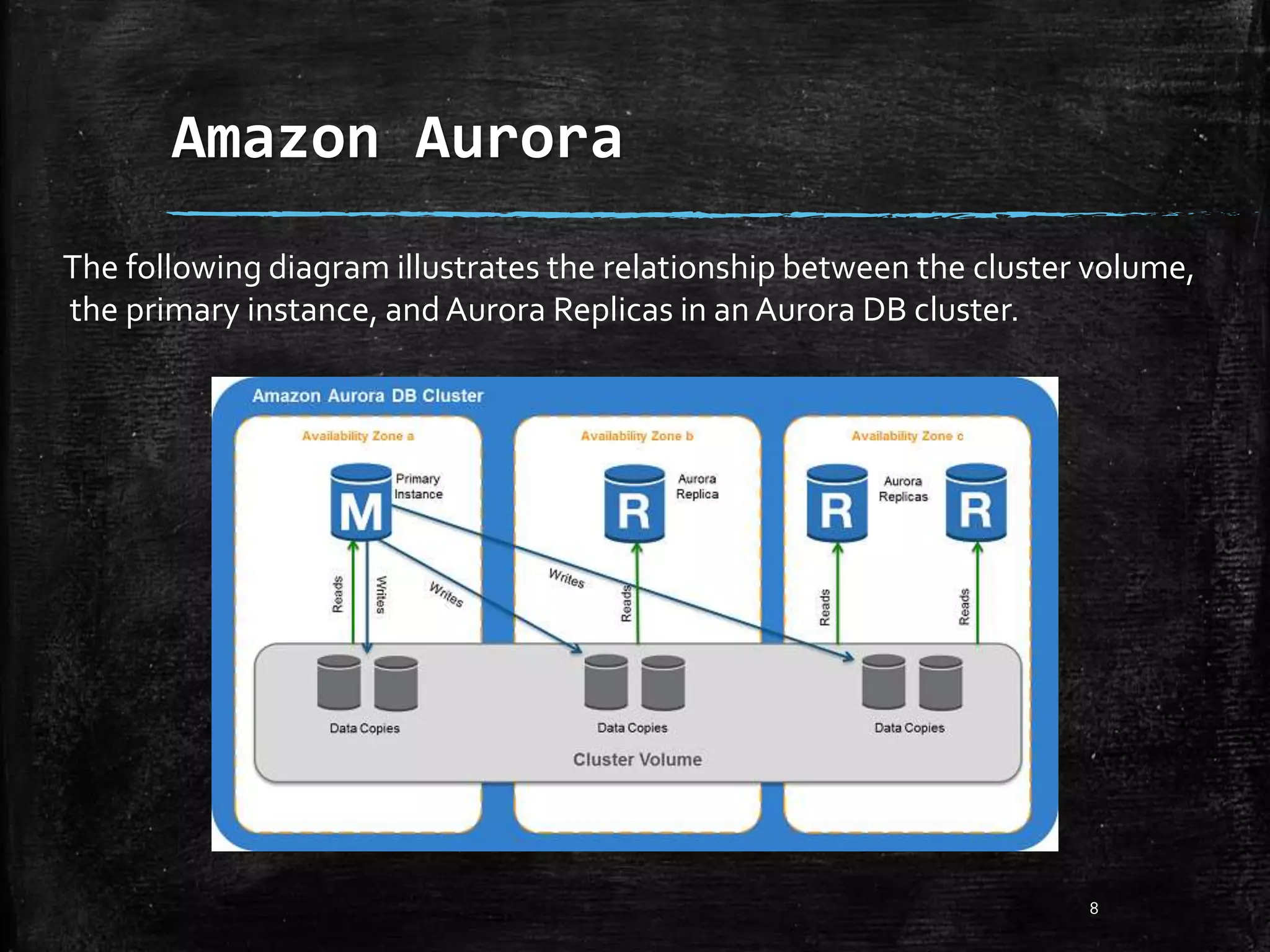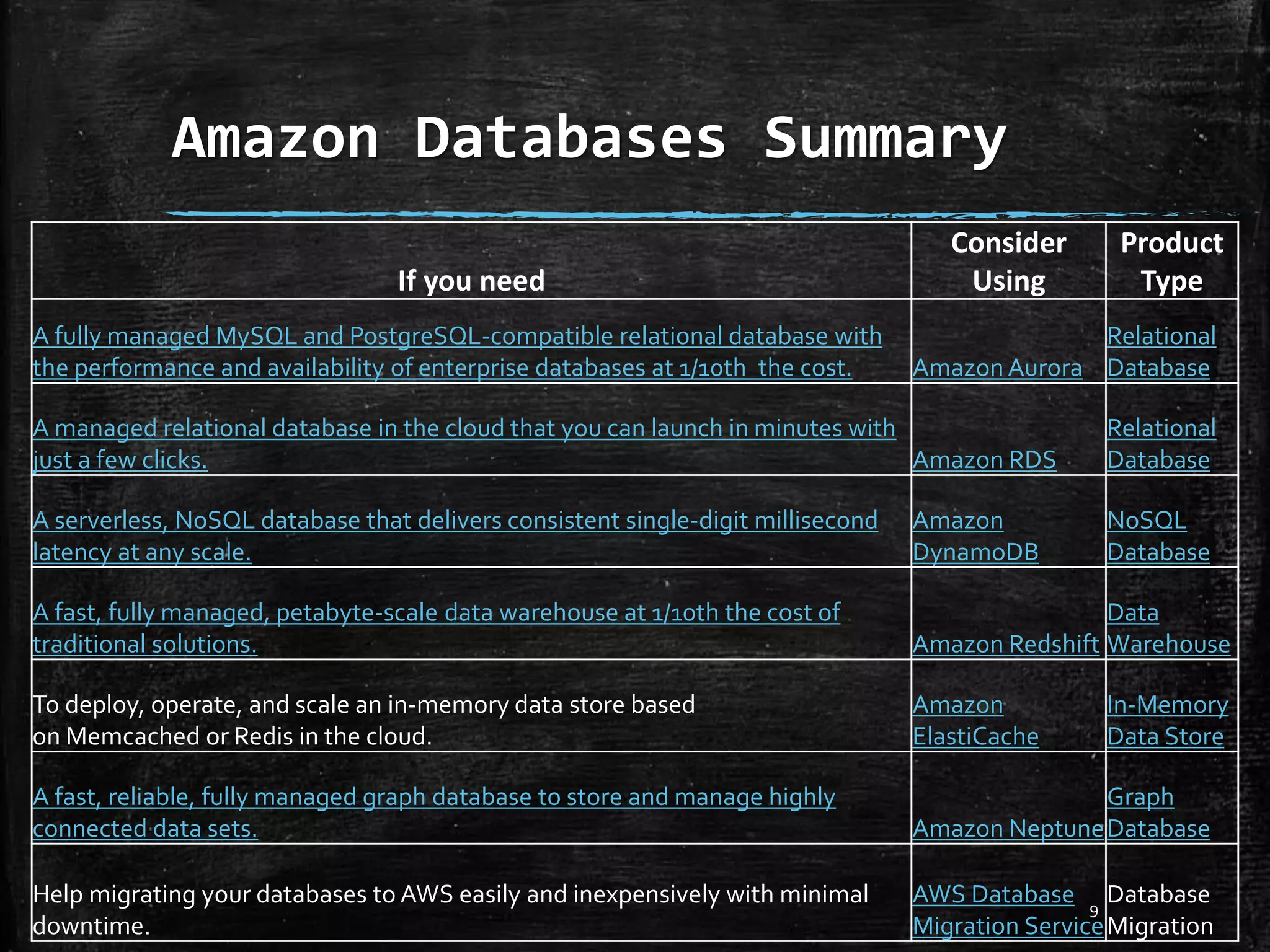Amazon Redshift is a fully managed cloud data warehouse service that allows users to launch a data warehouse cluster with a few clicks and handles all administrative tasks. Redshift Spectrum enables querying of data stored in Amazon S3 without loading it into Redshift. Amazon ElastiCache is a service that makes it easy to set up, operate, and scale a cache environment using Memcached or Redis with high performance and cost effectiveness.
